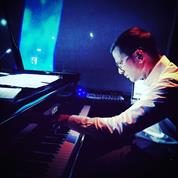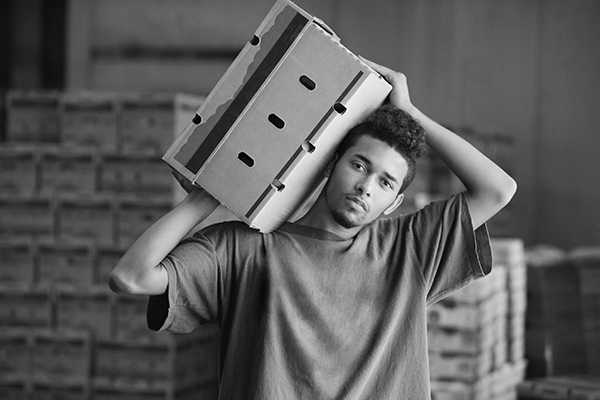The 20/19 Project takes place across East Kent this autumn and culminates in two performances at Westgate Hall in Canterbury and Turner Contemporary in Margate. Shaped around three new viola sonatas by internationally renowned composers Andrew Norman, Anna Thorvaldsdottir, and Scott Wollschleger, The 20/19 Project is rooted in the legacy of the viola.
1919 was an important year for the instrument: In the US, Elizabeth Sprague Coolidge held her annual competition, encouraging two close friends—Rebecca Clarke and Ernest Bloch—to submit viola sonatas. Halfway around the world, a young Paul Hindemith was finding his voice and writing his own viola sonata inspired by Claude Debussy’s colourful works. The pieces have become staples of the viola repertoire.
Marking the centenary of this competition provides a fascinating and timely opportunity to explore the socio-cultural conditions that had transformed utterly by 1919 and are seemingly doing so again in 2019.
Stretched as a tensed present, the years 1919 to 2019 make an interesting proposition for a short study of cultural formations. In 1919, the author Virginia Woolf set out to consider an ordinary mind on an ordinary day: ‘the mind receives a myriad impressions… from all sides they come, an incessant shower of innumerable atoms; and as they fall… they shape themselves’.
High modernist writers such as Woolf sought to record life more precisely than their predecessors by presenting each intuition as it arrived rather than sorting it first into something coherent. For them, there were no dead ends and no grand themes to explore. Woolf described her approach as writing to a rhythm rather than a plot and the outcome and its effect was fully realised in her playpoem, The Waves (1931).
The composer Paul Hindemith, who was born in the decade after Woolf, experimented with musical language to express his inner experiences. In the works around 1919 one finds ‘parody, entertainment, complexity, playfulness, simplicity, the grotesque, inexpressive qualities and terseness all at once, held together by the vital élan of music making’ (Fondation Hindemith, n.d).
Modernist projects such as these have been characterised as ‘an effort to eternalise the present’ (Lawlor, 1985).
Bearing this in mind, in bringing together the programme of activity for The 20/19 Project, I asked composers, filmmakers and contributors to consider the following question:
What does the present moment, with all its fragmentation, confusion and constriction, look/sound like when seen/heard from above?
This question was born out of the idea of labyrinth as embodiment and symbol of our uncertain and relativistic times (Basu, 2007, pp.47–70). I suggest that if we explore the present as an infinitely complex matrix of possibilities and actualities as it passes beneath us, it becomes possible to identify and extract narratives. We are no longer in the realm of mere succession but in the wider realm of history. In 2019, how this history can be told and who gets to tell it is rough business and open to negotiation.
Woolf’s eternalised present reminds me of how we listen to a piece of music for the first time. The violist and The 20/19 Project initiator, Anne Leilehua Lanzilotti, puts it another way when she says, ‘one must process music at the pace that it is unfolding without a context’. Here lies the challenge and the question for us as listeners: as the maze-walker, how can we rise above the immediate shower of sound to perceive the pattern and its dazzling artistry? Perhaps the answer is simply to enjoy its perplexity in the knowledge that the composers will lead us into daylight again.
Alternatively, we could take a leaf out of Asheem Singh’s recent blog post, ‘How to Listen’, and work towards a more humble position of listening deeply.
The 20/19 Project: Made in Transition, Part 1 takes place at Westgate Hall on 16 October and Part 2 at Turner Contemporary on 28 November. For more information about The 20/19 Project please visit http://studiowilldutta.art.
Join us with your curiosity and ideas to explore this provocative question at the heart of The 20/19 Project with Fellows and friends. The new Daphne Oram Creative Arts Building at Canterbury Christ Church University plays host to special RSA South East event on Friday 15 November.
Related articles
-
Working towards an improved Fellowship experience
Lucy Griffiths FRSA
The Fellowship Roadmap project commenced in March 2020 with the aim aim of better understanding the RSA Fellowship’s needs.
-
Announcing the Covid-19 Catalyst Award funded projects
Kimberley Staines
20 impactful projects run by RSA Fellows and funded by the RSA to respond to the effects of Covid-19.
-
Covid-19 and good work: stories from Catalyst grant winners
Emma Morgante
Winners of an RSA grant to deal with the impact of Covid-19 on the world of work.




Be the first to write a comment
Comments
Please login to post a comment or reply
Don't have an account? Click here to register.